Ninja manga has always held a unique place in Japanese storytelling—steeped in mystery, honor, revenge, and the quiet chaos of life in the shadows. Whether you grew up training alongside Naruto or you crave the cold realism of historical shinobi tales, the genre offers far more than just throwing stars and stealth.
In this guide, we’ve handpicked 12 of the most essential ninja manga ever created—from mainstream giants to cult classics, brutal war tales to cyberpunk carnage. These are the stories that define the genre, each one slicing into different aspects of the ninja mythos.
We’ve also included 12 honorable mentions for those hungry to dive even deeper into the shadows.
If you’re ready to explore stories of vengeance, rebellion, loyalty, and raw survival—this is your map to the best ninja manga on the planet.
The Ultimate Ninja Manga Guide: 12 Iconic Masterpieces + 10 Hidden Gems You Shouldn’t Miss
1. Naruto: The Iconic Ninja Epic That Inspired a Generation
By Masashi Kishimoto
Before anything else, we have to start with the ninja manga that changed everything—Naruto. For many of us, this wasn’t just a story—it was a reason to dream of becoming a ninja ourselves. One of the most powerful aspects of Naruto is watching its underdog hero, who starts off as a dropout no one believed in, slowly rise through grit, perseverance, and an unwavering spirit. His journey of growth is inspiring, and his relationships—especially with Sasuke and Sakura—bring humor, emotion, and tension to the story.
The supporting cast is just as memorable. Iruka-sensei’s kindness (and ramen recommendations) make him a true comfort character. Kakashi-sensei, despite his laid-back attitude and love for adult novels, is a legendary shinobi who always steps up when it counts. And then there’s Gai-sensei—eccentric hairstyle and all—whose words to Rock Lee, calling him “a genius of hard work,” continue to inspire fans to this day.
As the story progresses, the stakes get higher, and the emotional depth deepens. Through intense battles and shifting alliances, Naruto explores themes of loneliness, friendship, forgiveness, and personal growth. The worldbuilding is so detailed and grounded that it feels like a real ninja society—complete with politics, history, and moral gray areas.
At its heart, Naruto is more than just a battle manga. It’s a story that teaches us about what it means to believe in ourselves and others. It’s no exaggeration to say that Naruto is the world’s most iconic ninja—and this manga is the definitive starting point for anyone exploring the genre. For those who have already watched/read the series, here are 10 things you didn’t know about Naruto and Naruto Shippuden.
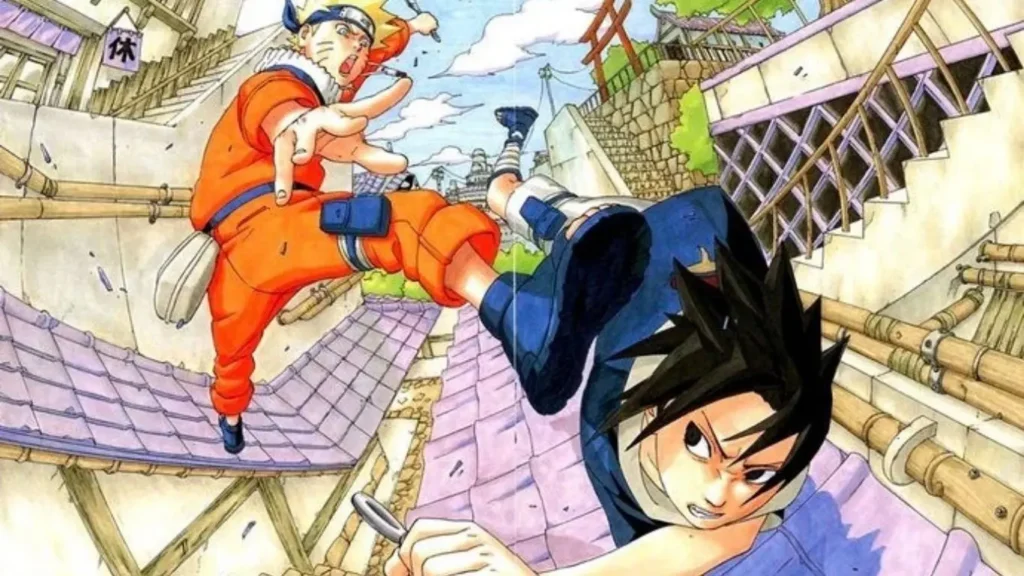
2. Basilisk: A Ninja Romeo and Juliet with Blades Drawn
By Masaki Segawa (Based on the novel by Futaro Yamada)
Basilisk takes the ninja genre to a darker, more tragic place—one filled with love, hatred, and political manipulation. Set during Japan’s Edo period, the story follows a brutal decree by Shogun Tokugawa Ieyasu: ten elite ninjas from the rival Iga and Kouga clans must fight to the death to determine the next Tokugawa Shogun. The catch? The winning clan will hold political power for the next thousand years.
At the center of this deadly conflict are Oboro of the Iga clan and Gennosuke of the Kouga clan—heirs who have fallen deeply in love despite their clans’ long-standing blood feud. But when duty and legacy pit them against each other, their romance becomes a tragic thread woven through a tapestry of violent, emotional showdowns.
Each character in Basilisk faces a poignant and often shocking end, making it feel like an Edo-era Shakespearean tragedy. The human drama, political backdrop, and unique ninja abilities keep the tension high from beginning to end. And yes—it’s heartbreakingly short, yet unforgettable.
Winner of the 2004 Kodansha Manga Award for Best General Manga, Basilisk is a powerful tale of love versus fate, and one of the most emotionally gripping ninja manga ever created. It’s impossible to put down—and nearly impossible to forget.
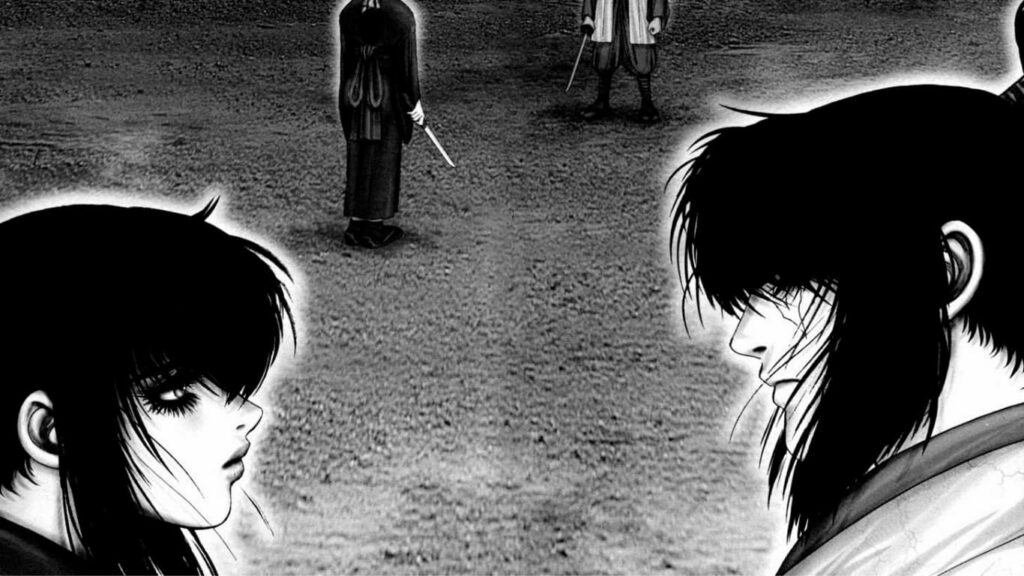
3. Under Ninja: The Secret Lives of Modern-Day Shinobi
By Kengo Hanazawa
Set in modern-day Japan, Under Ninja reimagines the world of covert operatives still working from the shadows long after the age of traditional ninja has passed. Though the world believes active ninjas were wiped out by GHQ after World War II, the truth is far stranger—they’re still out there, quietly influencing society from behind the scenes.
At the center of the story is Kuro Kumogakure, a low-ranking, unemployed ninja whose lifestyle borders on that of a NEET. That is, until he’s suddenly assigned a high-stakes mission that drags him back into the clandestine world of espionage and combat. What follows is a gripping blend of acrobatic action and offbeat comedy, paced in a way only Kengo Hanazawa can deliver.
The manga mixes stealth warfare with absurdity, realism, and sharp commentary—perfect for fans of Naruto who want a darker, more grounded (yet still quirky) take on the ninja mythos. Its unique tone and setting have earned it critical acclaim, including a nomination for the 49th Kodansha Manga Award (2025) in the General category.
If Hanazawa’s name rings a bell, it’s for good reason—he’s the acclaimed mind behind I Am a Hero, Boys on the Run, and Ressentiment, with over 8 million copies of his works in circulation. With an anime adaptation that began airing in October 2023, Under Ninja is a modern ninja thriller that deserves your attention.
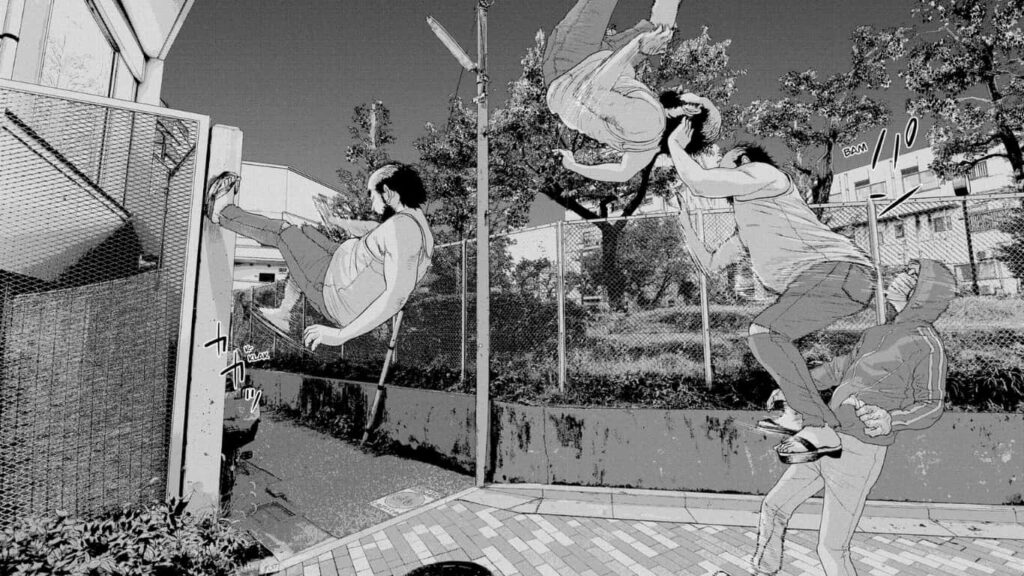
4. Ninku: The Forgotten Pioneer That Blended Ninjutsu with Guts and Gags
By Koji Kiriyama
Before Naruto ever hit the shelves, there was Ninku—a high-energy, weirdly lovable ninja manga that helped shape the future of the genre. First serialized in Weekly Shonen Jump in 1993 and later completed in Ultra Jump, Ninku blends classic shounen fighting spirit with a martial arts style that fuses ninjutsu and karate, known as “Ninkuu.”
The story follows Fuusuke, a 12-year-old former captain of the 1st Ninku corps and master of wind-based Ninkuu. After the war, Ninku warriors were hunted down and nearly wiped out by the ruling powers, feared for their strength. Years later, Fuusuke sets off on a journey with his flatulent penguin sidekick, Hiroyuki, to reunite the surviving Zodiac Ninku masters—each named after a Chinese zodiac animal—to face a new threat: a rogue Ninku faction bent on world domination.
Ninku delivers more than just intense battles. Its quirky art style, unpredictable humor, and elemental power system make it stand out. The characters—like the cool-headed Touji and the fierce Aio—bring both comedy and heart, while the dark, postwar setting adds emotional weight to their mission.
Despite being underappreciated today, Ninku was a major influence on Masashi Kishimoto, the creator of Naruto. With over 9 million copies in circulation, an anime adaptation aired in 1995, and a fan-favorite opening theme (“Kagayaki wa Kimi no Naka ni”), this series remains a cult classic among ninja manga lovers.
If you’re looking for a ninja story that feels both retro and radical, with action, laughs, and a bit of bizarre charm—Ninku is a must-read.
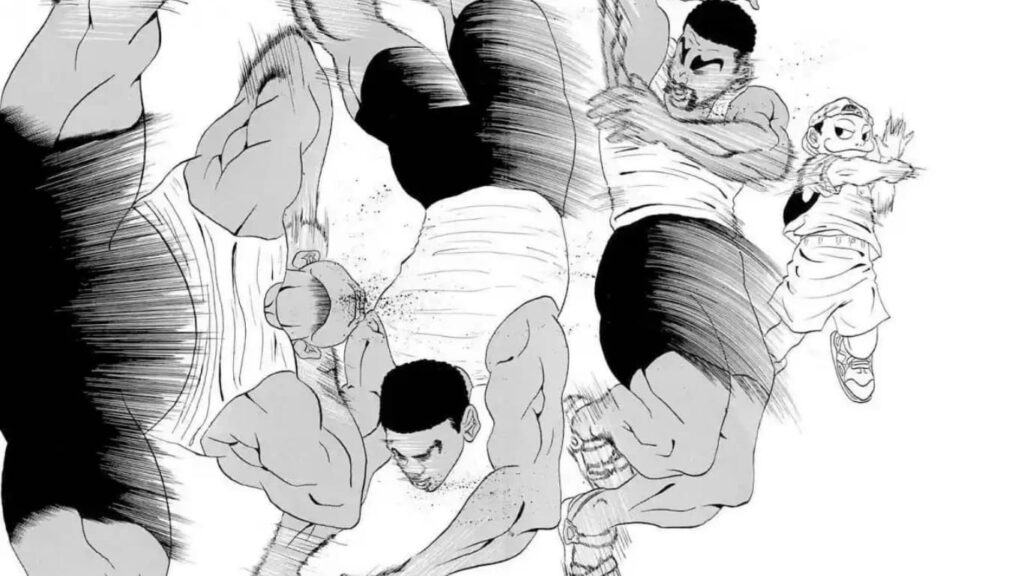
5. Azumi: The Assassin Kunoichi Who Was Never Given a Choice
By Yū Koyama
Long before ninja became pop culture icons, they were shadows in history—killers molded by duty, not heroism. Azumi brings that reality to life with a brutal, emotional story about a young woman raised from childhood to kill. Tasked with eliminating warlords who threaten to plunge Feudal Japan back into chaos, Azumi knows nothing but the way of the blade.
Trained as part of an elite team of assassins, Azumi is a kunoichi with extraordinary skills—swift, deadly, and precise. But beneath her warrior’s exterior lies a girl burdened by a life she never chose. Her innocence clashes with her role as a killer, and as she meets people outside the mission, she begins to question the meaning of strength, morality, and humanity.
This contrast is what makes Azumi unforgettable. She’s not just a deadly ninja—she’s a layered character shaped by survival. Watching her mow down enemies has the thrill of a period drama, yet there’s a lingering sadness in every silent glance and swift strike. The series powerfully captures the loneliness and trauma of living as a weapon.
Azumi was honored with an Excellence Prize at the 1997 Japan Media Arts Festival and won the 43rd Shogakukan Manga Award (1998). It was also adapted into two live-action films starring Aya Ueto, introducing the character to a broader audience.
If you’re looking for a kunoichi story that challenges the glamorous ninja image with elegance, sorrow, and ferocity—Azumi is a must-read.
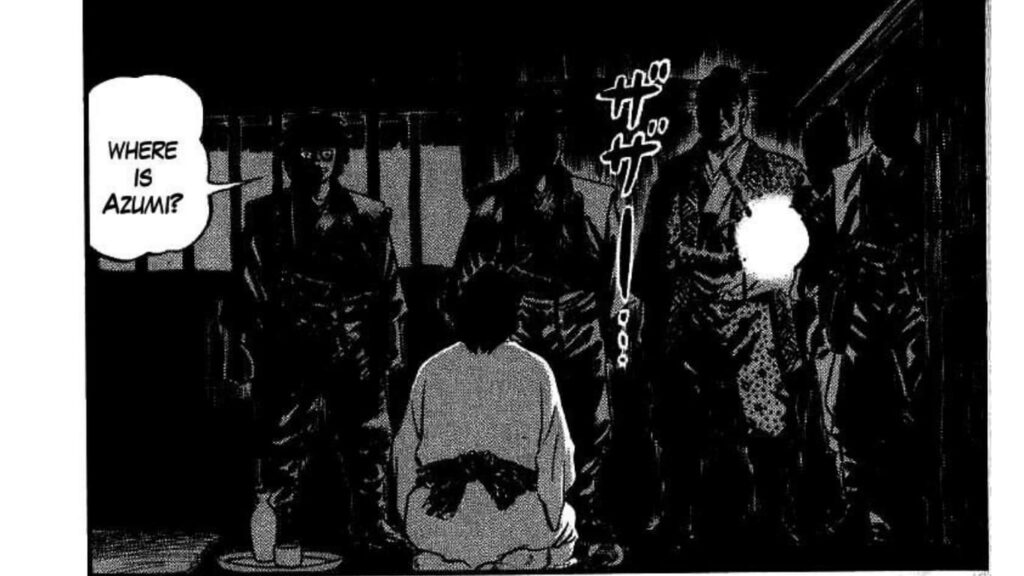
6. Kamui Den: The Ninja Epic That Dared to Challenge Japan’s Social Order
By Sanpei Shirato
Few manga hold as much historical and cultural weight as Kamui Den. Serialized beginning in 1964 in Garo—a magazine that Sanpei Shirato himself helped launch—this landmark series redefined what manga could be. Set in the Hioki Domain during the Edo period, Kamui Den follows three lives entangled in Japan’s harsh feudal class system: Kamui, a ninja from a non-human outcast community; Shosuke, a peasant who rises to lead a rebellion; and Soka Ryunoshin, the conflicted son of a samurai official.
While Kamui Den features masterfully drawn action and intense ninja drama, it is so much more than a tale of espionage and survival. Through its multi-threaded storytelling, Shirato exposes the deep-rooted injustices of class discrimination, forced labor, and the exploitation of marginalized communities. It explores the brutal realities of samurai rule not through glorification, but through the lens of human suffering, resistance, and survival.
For many readers, this is a manga that only truly reveals its depth with age. Beneath the fast-paced ninja confrontations is a scathing, philosophical examination of power and inequality—of what it means to live as someone deemed less than human by a broken system. And yet, it also offers moments of resilience, dignity, and personal transformation.
Though untranslated in full, Kamui Den sold over 15 million copies, and its sequel Kamui Gaiden was among the first manga officially published in English as The Legend of Kamui (by VIZ Media & Eclipse Comics in 1987). Shirato’s passing in 2021 marked the end of an era; his brother and co-illustrator Tetsuji Okamoto tragically passed away just days later. Their combined legacy lives on in every panel of this historic manga.
Kamui Den is not just a classic ninja manga—it’s a blueprint for socially conscious storytelling. If you want to read something that challenges, enlightens, and moves you, this is where to begin.
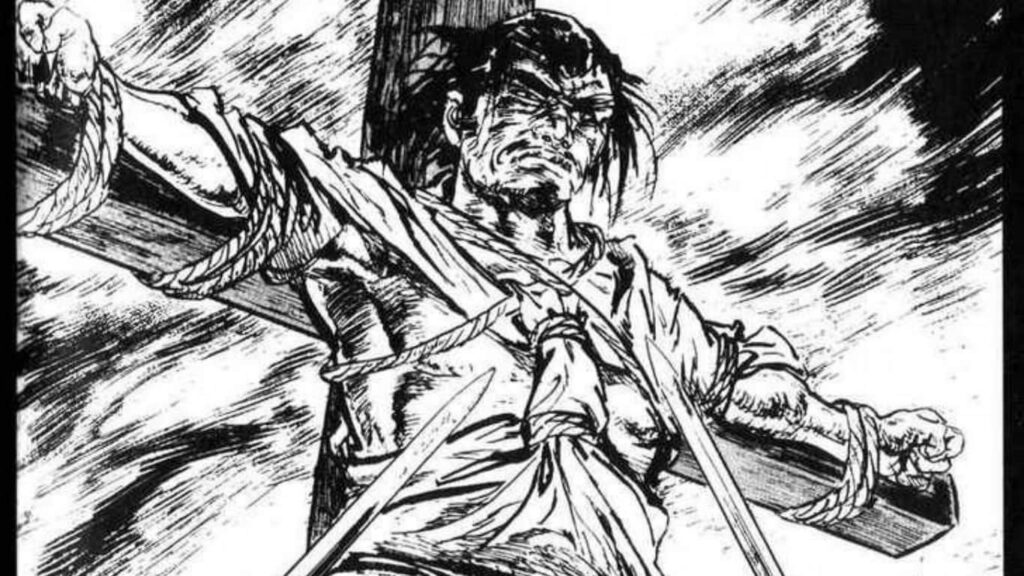
7. Shinobi no Kuni: The Brutal Heart of Iga’s Ninja Wars
By Mutsumi Banno (Based on the novel by Ryo Wada)
Set in 1576, during Japan’s Warring States period, Shinobi no Kuni is a gripping tale that fuses historical realism with the cold logic of war. Iga Province—famed as the birthplace of real-world ninja—is fractured, with 66 samurai factions fighting petty, bloody skirmishes. In this unstable land, human life is cheap, and the ninjas who serve these clans operate with brutal efficiency.
The story centers on Heibei, the heir of the Shimoyama family, who grows weary of senseless violence. But when the Shimoyama fortress is breached by Mumon, the strongest and most feared ninja from the rival Momochi clan, things take a tragic turn—Heibei’s younger brother is slain for nothing more than a paycheck. Disillusioned, Heibei decides to walk away from the endless bloodshed.
Shinobi no Kuni doesn’t glamorize ninja life. Instead, it explores the dark psychology of mercenary warfare, where loyalty is bought and death is routine. The characters are complex, the violence is unflinching, and the story challenges readers to think about morality in an age of war. Its cinematic tension and layered themes have even led to a live-action film adaptation, proving its broad appeal.
If you’re drawn to ninja manga with emotional weight, historical touch, and a sobering look at the cost of war, Shinobi no Kuni is essential reading.
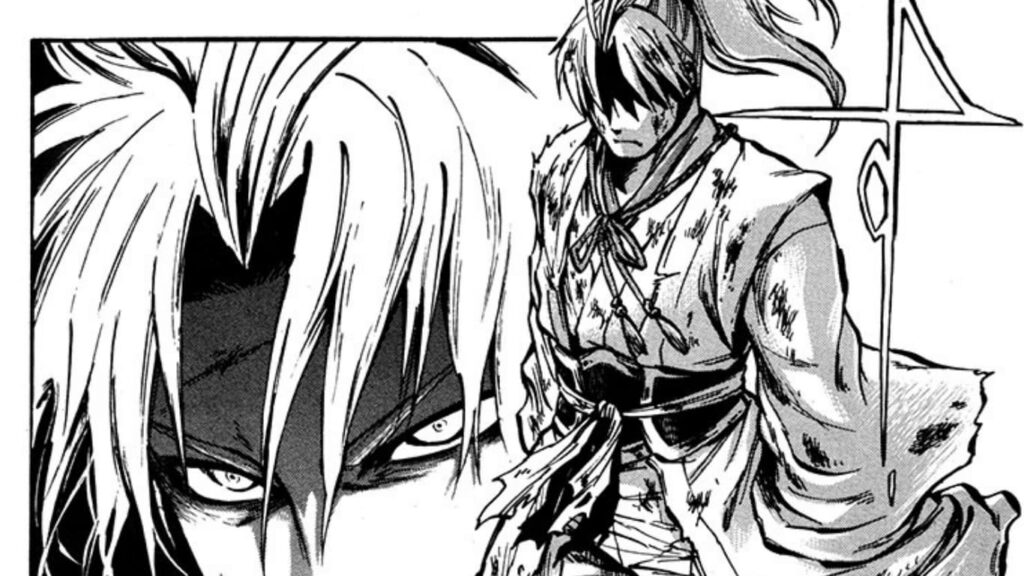
8. Shinobi no: The Last Ninja’s Final Mission at the Edge of an Era
By Ogaki Rokurou
Ninja tales often center on youthful prodigies, but Shinobi no flips the script with Sawamura Jinzaburō—a 58-year-old man and the last living ninja in Japan. Set during the dying days of the Edo period, when samurai are fading into history and the world is changing fast, this manga delivers a gripping, historically grounded action story with one final mission: infiltrate the mysterious Black Ships that have arrived from the West.
The world has long forgotten ninjas—but the shogunate hasn’t. Jinzaburō, an “outdated man” in the eyes of the modernizing elite, is handed a secret mission that could change Japan’s fate. As he moves through a country shedding its traditions, he proves that stealth, strength, and sheer will still matter—even when the world is no longer built for men like him.
Written and illustrated by Ogaki Rokurou, the talent behind Akudama Drive and Crazy Food Truck, Shinobi no stands out not just for its historical premise but for its fluid art, sharp pacing, and deeply likable protagonist. The inclusion of Shinsengumi characters and real historical nods adds richness to the story, making it both entertaining and exhilarating.
Completed in just 6 volumes, it’s a short but powerful read—perfect for fans who love ninja action with emotional depth and historical flair. If you’ve ever wanted to see what happens after the glory days of shinobi, this one’s for you.
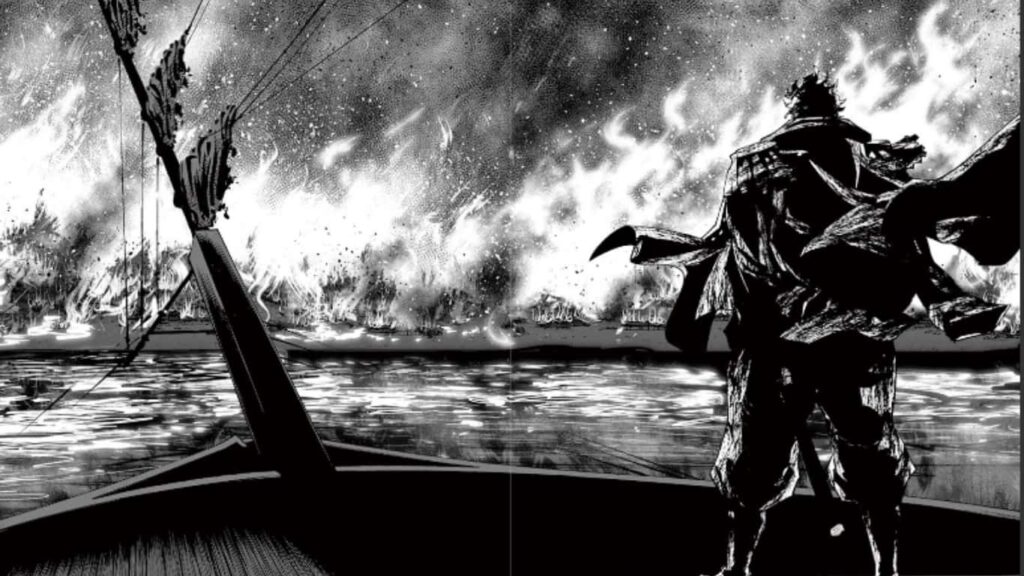
9. Ninja vs. Gokudo: Blood Feuds, Brutality, and Brotherhood in Tokyo’s Underworld
By Shinsuke Kondō
What if the shadows of old Japan never truly disappeared—but instead kept fighting from the gutters of Tokyo? That’s the premise behind Ninja vs. Gokudo, a wild and visceral battle manga where ancient ninja clans face off against modern-day yakuza in a 300-year war that still spills blood in the back alleys of today.
At the center of the chaos is Tanaka Shinoha, a boy traumatized into silence, and Kimura Kiwami, a mysterious elite salaryman who turns out to be no ordinary gangster. Despite being on opposite sides of this age-old conflict, the two form an uneasy friendship—one that may either heal them or destroy them. As their connection deepens, the stakes of the ninja–yakuza feud reach explosive new heights.
Serialized in Comic Days since 2020, Ninja vs. Gokudo has earned a growing cult following, ranking 9th in the Next Manga Awards 2021 (Web Manga category) and 10th in AnimeJapan’s Most Wanted Anime Adaptation (6th Edition) poll. And with an anime adaptation by Studio Deen officially announced for 2025 (directed by Toshinori Watanabe), it’s clear this stylish bloodbath is only gaining momentum.
If you’re looking for something fast, violent, and surprisingly emotional—this is your jam. Ninja vs. Gokudo doesn’t just ask who would win in a fight between ninjas and gangsters—it makes you care about the answer.
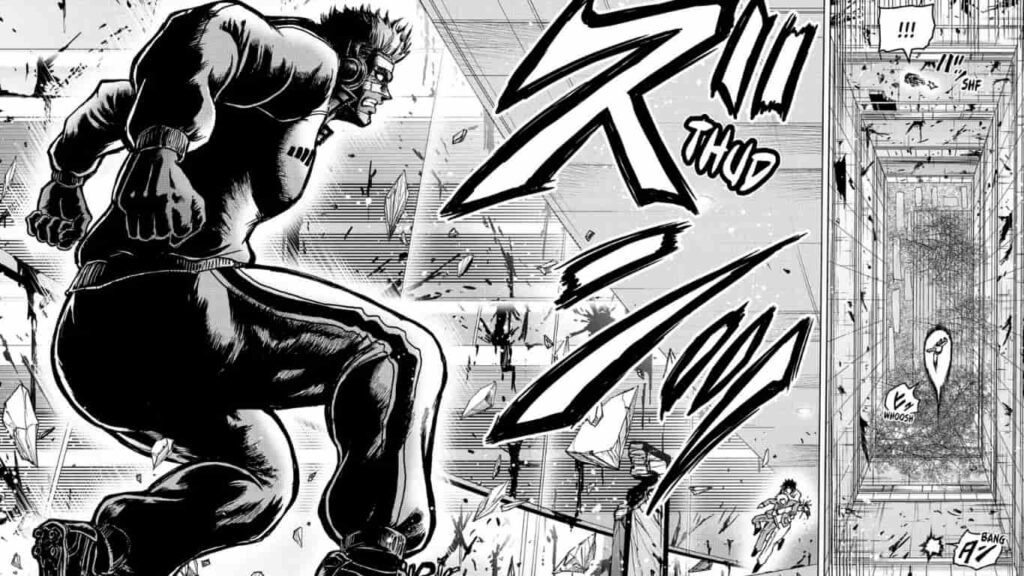
10. Seven Ninja of the Imperial Guard: A Bloody Ballet of Rebellion and Revenge
By Yamaguchi Takayuki
Dark, visceral, and explosive. If Berserk and Basilisk had a violent, period drama cousin, this would be it.
When history bleeds into fantasy, the result is Seven Ninja of the Imperial Guard—a ferocious, high-stakes ninja epic set during the final flickers of Japan’s Warring States era. In this twisted vision of history, Tokugawa Ieyasu, now supreme ruler, enforces peace with divine brutality through the god of war Kibitsuhiko-no-Mikoto. But shadows still stir—seven of them.
These are the Efu—former imperial guards turned rogue ninja blades. Neither man nor beast, they cut through the tyranny of the shogunate like petals on the wind—or razors through flesh. Bound by vengeance and fate, the seven rebels wage a savage, near-mythical war against overwhelming power in a world where history has been rewritten in blood.
The manga blends elements of historical fiction, samurai legend, dark fantasy, and grotesque ultra-violence. The art is dense, feral, and explosively kinetic, often evoking comparisons to Baki or even Berserk. Body parts fly, fundoshi flaps, and grotesque enemies leer from the shadows. While the plot may follow Sengoku iconography, the storytelling is free-form, exaggerated, and unapologetically unhinged.
It’s not a light read—narratively or visually—but it’s bursting with raw passion, theatrical dialogue, and creative mayhem. For readers who crave dark fantasy infused with period drama aesthetics, adult themes, and a poetic brutality, Seven Ninja of the Imperial Guard will cut deep.
Just don’t expect mercy. These blades were forged for war.
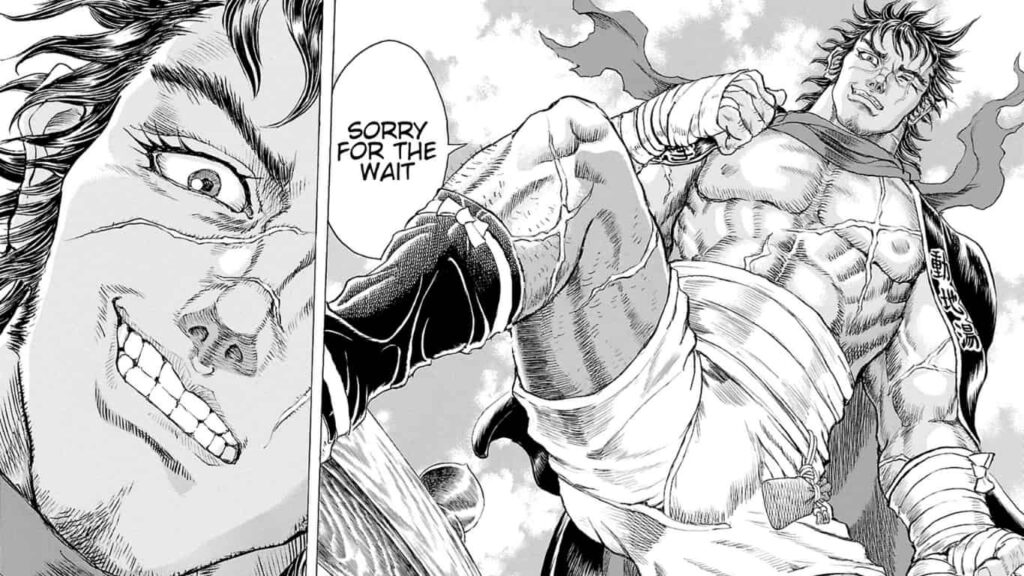
11. Mujina: The Cult Classic Ninja Tale You’ve Probably Never Heard Of (But Should Read Now)
By Koji Aihara
Hidden among the gag comedy legacy of Koji Aihara lies a haunting, experimental ninja saga—Mujina. Serialized back in 1992, this long-form manga follows a dropout ninja named Mujina, who navigates a cruel, blood-soaked shinobi underworld. While it includes heavy doses of eroticism and gore, these aren’t just shock value—they’re integral to portraying the violent, unflinching reality of ninja life.
Aihara, known for his comedic works like Even a Monkey Can Draw Manga, channels his deep admiration for Sanpei Shirato (Kamui Den) into this serious and sharply political ninja drama. What sets Mujina apart is its layered storytelling, where not just the main character, but every supporting player, feels like they’ve lived a lifetime. The series frequently veers into bold visual experiments and narrative detours that add depth and complexity—not confusion.
Yes, it’s violent. Yes, it’s sexually explicit. And yes, it can be hard to recommend at face value. But beneath that lurks a raw, experimental masterpiece that pushes the boundaries of what ninja manga can be. It’s grim, mature, and may not be for everyone—but for those who stick with it, Mujina becomes unforgettable.
If you’re a fan of Kamui Den or looking for ninja manga that breaks rules and rewrites expectations, this is the one you’ve been waiting for.
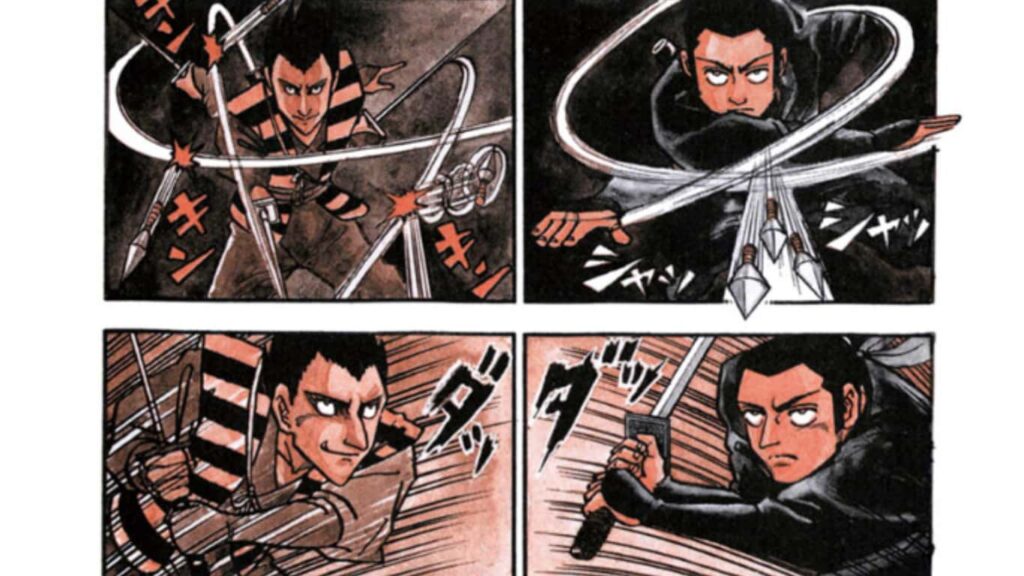
12 Ninja Slayer: Cyberpunk Carnage, Exploding Ninjas & Glorious Madness
By Yoshiaki Tabata, Bradley Bond, Philip Ninj@ Morzez, Yogo Yuki
“Ninjas were… merciless demi-gods, ruling Japan with their karate.” If that line makes you grin or go “Wait, what?”, you’re ready for the glorious chaos that is Ninja Slayer.
Adapted from a cult-favorite American novel written by Bradley Bond and Philip Ninj@ Morzez, this manga is the ultimate outsider’s take on Japanese ninja mythology—filtered through neon, cybernetics, and unapologetic absurdity. The setting? A dystopian techno-hellscape called Neo-Saitama, where cyberninja battle yakuza, salarymen, and resurrected ninja souls from the past.
Enter Fujikido Kenji, an ordinary salaryman who becomes the grim reaper-like Ninja Slayer after his family is killed in a turf war. Possessed by an ancient ninja spirit, he embarks on a relentless, bloody vendetta against the Soukai Syndicate and their evil, cyber-enhanced ninja warriors. It’s revenge. It’s ridiculous. And it’s absolutely riveting.
What makes Ninja Slayer truly stand out is its hyper-stylized narration, random bursts of Japanese catchphrases, and off-the-wall humor. One moment you’re in a grim rooftop duel, the next someone’s yelling “AIIIIIIIEEEE!?” as limbs fly. It’s satire, action, and chaos blended into one glorious mess that somehow just works.
Don’t overthink it. Just dive in headfirst, scream along with the sound effects, and enjoy the ride. Ninja Slayer is everything a cyberpunk ninja manga shouldn’t be—yet it’s exactly what makes it unforgettable.
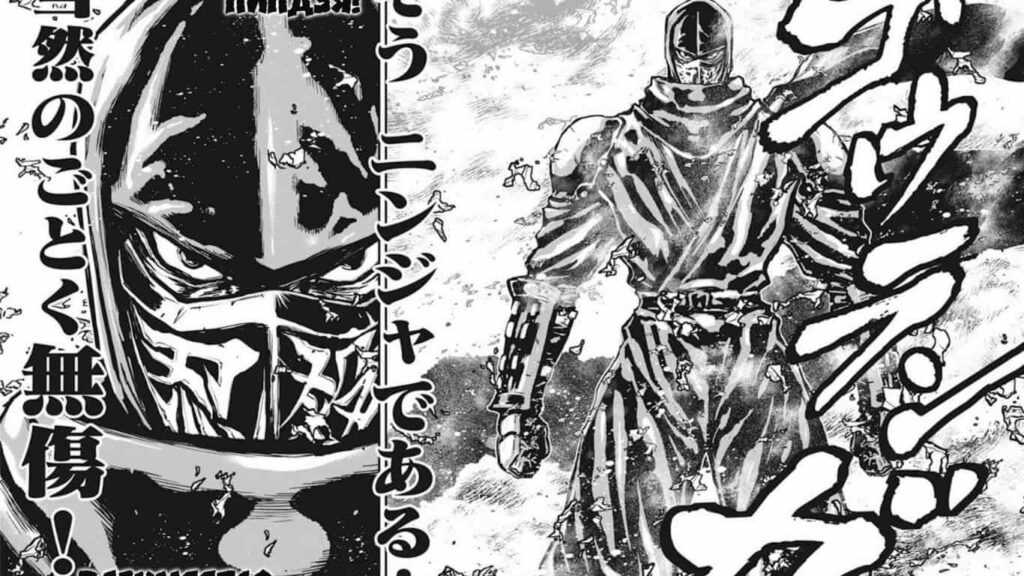
Honorable Mentions: More Ninja Manga Worth Your Blade
The world of ninja manga is vast, with dozens of hidden gems and cult classics. While they didn’t make our main list, these titles absolutely deserve a mention—whether for their historical value, stylistic flair, or pure entertainment factor.
- Ninja Hattori (by Fujiko Fujio) – A classic family-friendly ninja comedy that helped define the ninja trope for generations of anime lovers.
- Fuuma no Kojirou (by Masami Kurumada) – High-octane battles and school rivalry wrapped in ninja mythos from the creator of Saint Seiya.
- Rakudai Ninja Rantaro (by Sōbē Amako) – A charming, long-running gag manga about clumsy ninja students; beloved by kids across Japan.
- Ninja Shinobu-san no Junjou (by Yuzuchiri) – A sweet and quirky slice-of-life about a shy kunoichi trying (and failing adorably) to hide her ninja identity.
- Shinobi Gataki (by Tobita Nikiichi) – A gritty revenge-driven action manga where ninjas are anything but noble.
- Igano Kabamaru (by Yū Azuki) – A comedic cult hit about a wild, ramen-obsessed ninja boy adjusting to life in the modern world.
- Nabari no Ou (by Yuhki Kamatani) – Emotionally complex, with a modern setting and a deep exploration of identity, power, and loss.
- Yama Fu-Tang (by Fuutarou Yamada & Masaki Segawa) – A masterwork of samurai-ninja storytelling with historical edge and visual intensity.
- Flame of Recca (by Nobuyuki Anzai) – Classic 90s shonen with ninja bloodlines, elemental powers, and tournament arcs galore.
- The Yagyu Ninja Scrolls (by Masaki Segawa) – Another visually striking and morally intense ninja epic, perfect for Basilisk fans.
Wrapping It Up: The Many Faces of Ninja in Manga
Across eras and genres, these 12 ninja manga have carved out a legacy that goes far beyond shadowy assassins and flashy hand signs. Some are emotionally profound, others comically unhinged—but all of them carry the spirit of the ninja: adaptable, unpredictable, unforgettable.
And while these are our 12 essential picks, the honorable mentions list is filled with just as much steel and soul—waiting to be discovered by readers ready to explore even deeper.
Whether you’re here for heartfelt growth, violent rebellion, or cybernetic ninja mayhem, there’s something here for every kind of reader.
Think we missed a hidden gem? Let us know your favorite ninja manga in the comments.
And if you’re looking to watch anime for free in India, check out our anime streaming & download guide!



